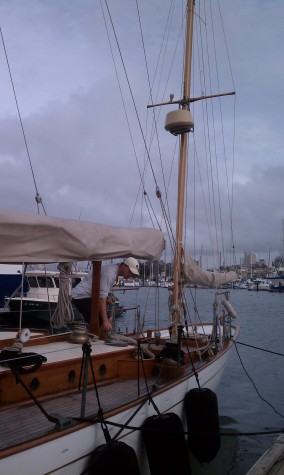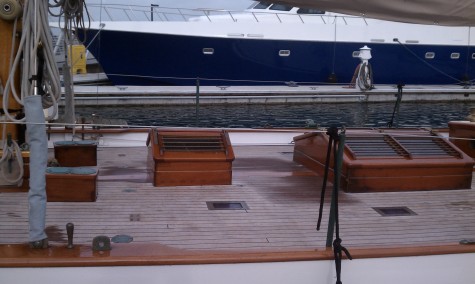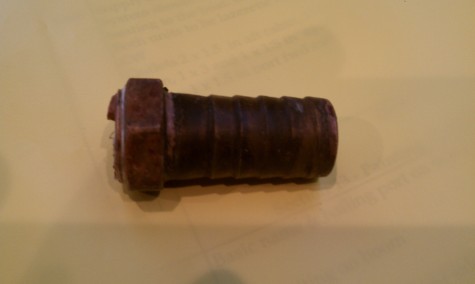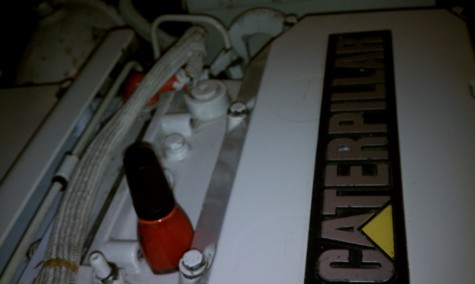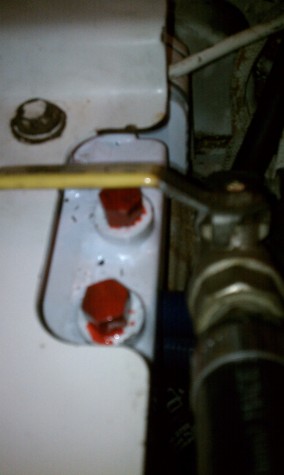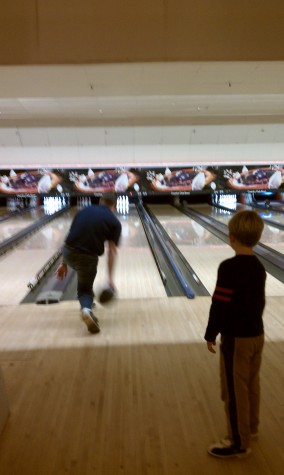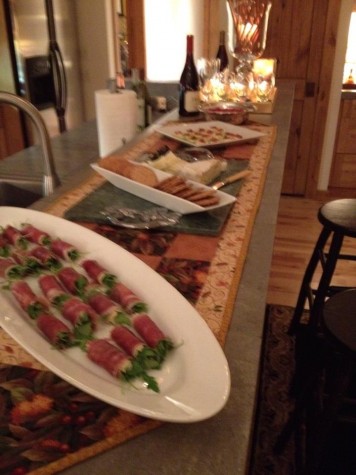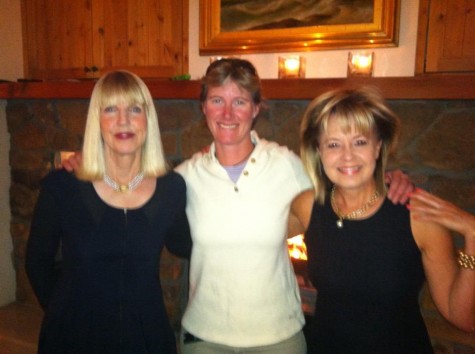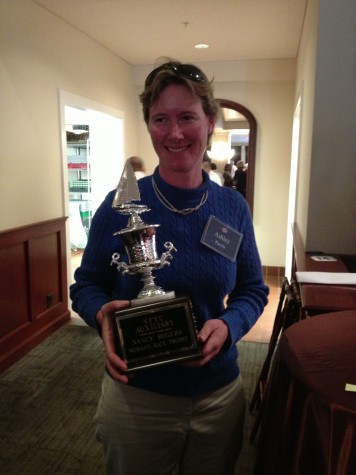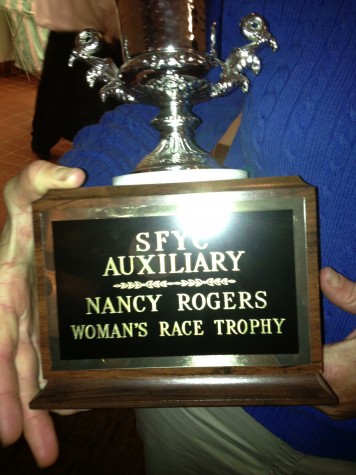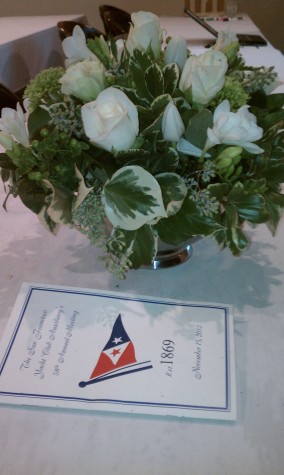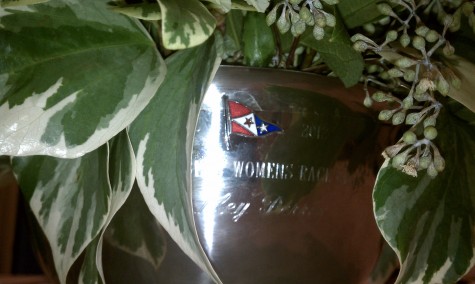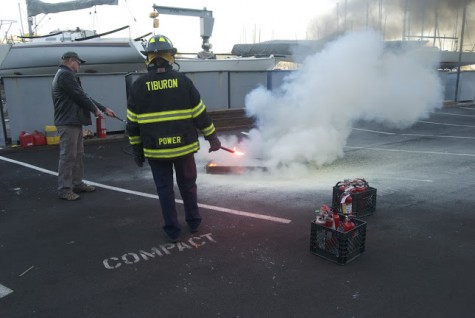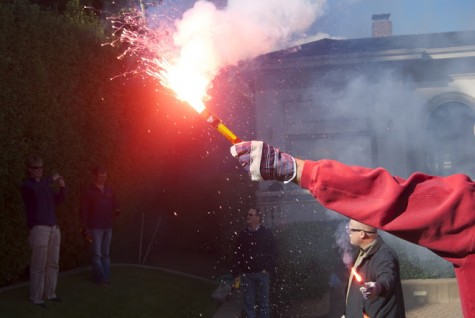Sailing a classic
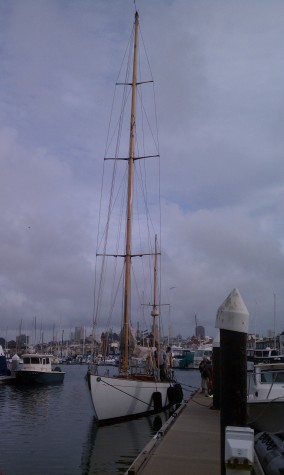 I was asked by a friend (Paige) to sail on Dorade a yacht designed in 1929 by Olin Stephens of Sparkman and Stephens and built 1929–1930 by the Minneford Yacht Yard in City Island, New York. We raced in the Golden Gate midwinters off the city front.
I was asked by a friend (Paige) to sail on Dorade a yacht designed in 1929 by Olin Stephens of Sparkman and Stephens and built 1929–1930 by the Minneford Yacht Yard in City Island, New York. We raced in the Golden Gate midwinters off the city front.
It was a miserable morning the fog was thick and it was raining as I crossed the bridge. However, it cleared up into a beautiful afternoon with 15 knots.
An interesting boat to sail bit different to what I am use to – lots of varnish and quite narrow for her length. The boat is heavy so it carries it’s way and takes a while to start changing direction after the helm has been put down.
More fun on Darling
I seem to be adding more to the work list than I can sort out in a day so I have asked for reinforcements in the form of Matt from KEP as he will be leaving the island in a few weeks. Hopefully that will work out and he can work for me in January and February.
Today finally got all the smelly bilge water out of the engine bilge as I didn’t want to fully clean it until after the engine servicing had been completed. I was able to see there were a few bilge switches that had been installed and disconnected etc. and was able to empty the bilge uptake filters and test the switches. It now smells of oranges in the boat.
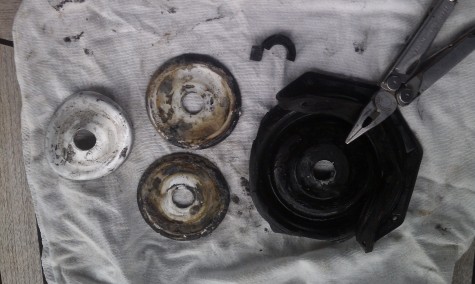
When I was emptying the bilges I thought it would be a good time to properly test the manual bilge pump as there are three systems to empty the bilges – electric automatic, manual and engine driven. So after investigation it seems I need to completely rebuild the manual and engine driven systems as neither are in a working state!! As you can see in the above picture on of the diaphragms is useless, a plate is bent the other plates are corroded and one of the nuts holding the plates to the pivot arm is destroyed.
I found a leak in the prop water feed which on investigation was a cracked fitting which had been over torqued. Bit of a problem.. time for an easy out.
So why would I have nail varnish for a project on the caterpillar engine? Simple.. I use it to mark the zincs, bleed nuts etc.
Leftover dinner
Today I had a great relaxing day making a meal from leftover Thanksgiving holiday food.
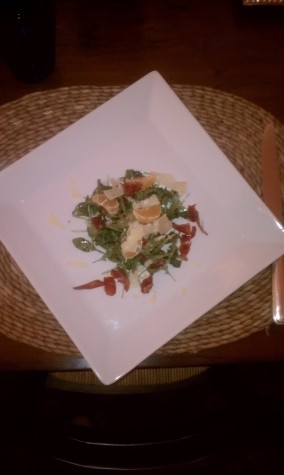
Next was arugula (rocket) salad with balsalmic mustard dressing, parmesan shavings, clemetine segments and baked crumbled proscuitto.

Entree of turkey soup (made from homemade stock) with dried cranberries and cilantro.
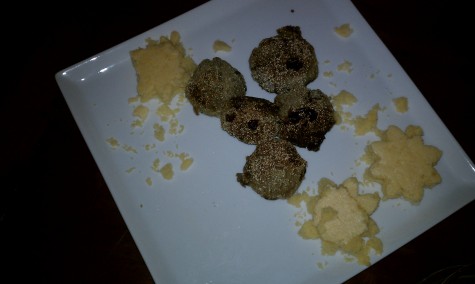
Served on the side were balls of stuffing coated in corn meal and star shaped corn bread.
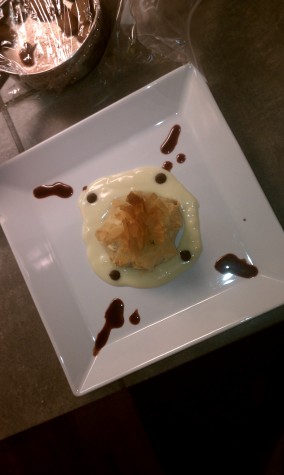
Dessert – choice of pear or apple phyloll parcels with homemade vanilla custard, port-cherry reduction and semi sweet chocolate chips.
Sun Valley Thanksgiving
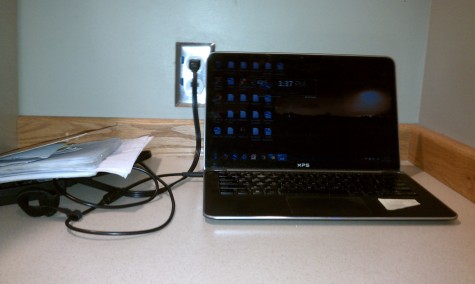
My office at Boise airport! I was there for 7 hours on wednesday waiting for a shuttle so I got lots of ordering done for parts for Darling.
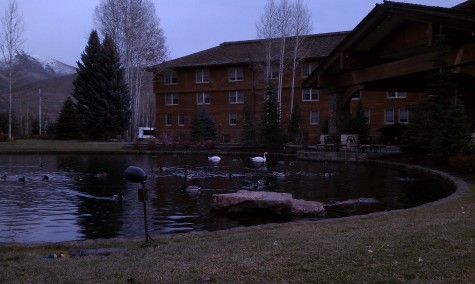
No snow around the lodge unfortunately. The lodge is beautifully decorated for the holidays and had many old photos of celebrities who used to come to sun valley sking.
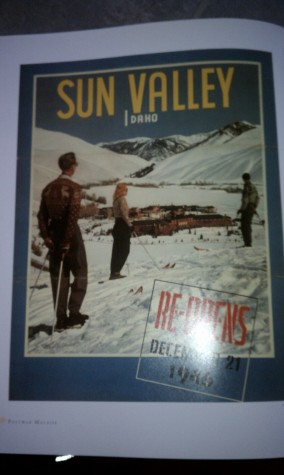 Old style advertising for Sun Valley skiing.
Old style advertising for Sun Valley skiing.
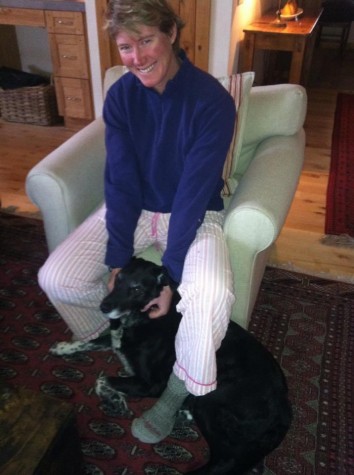
Uncle Dales and Linda’s dog Punzi who loves attention and I love giving it to her!
With Aunty Linda in front of a beautiful log fire.
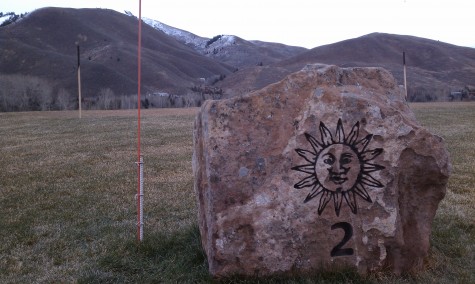 The golf course Uncle Dale goes to has an amazing lodge.
The golf course Uncle Dale goes to has an amazing lodge.
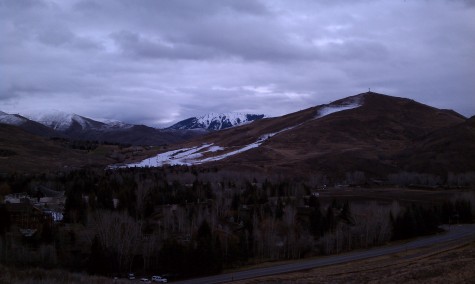 Manmade snow for those desperate to go skiing.
Manmade snow for those desperate to go skiing.
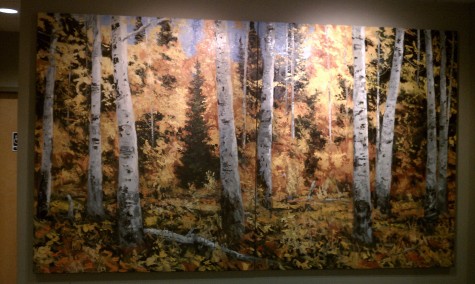 Some artwork from a gallery open during the gallery walk.
Some artwork from a gallery open during the gallery walk.
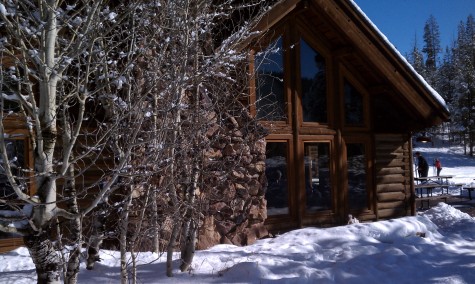 We headed higher to Gallena Lodge and finally found some snow.
We headed higher to Gallena Lodge and finally found some snow.
Safety at Sea courses again – in pictures
We ran another Safety and Sea course at SFYC on 10-11th November. There will be a repeat 17-18th. In the meantime we have VHF and radar courses running in the weekday evenings.
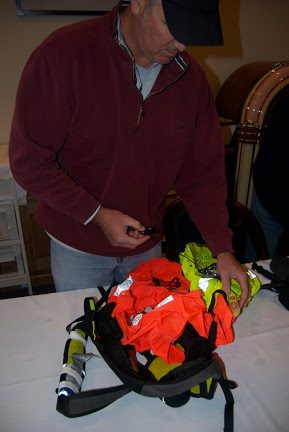
How does this go back together. Getting to know your lifejacket… it is pretty important.
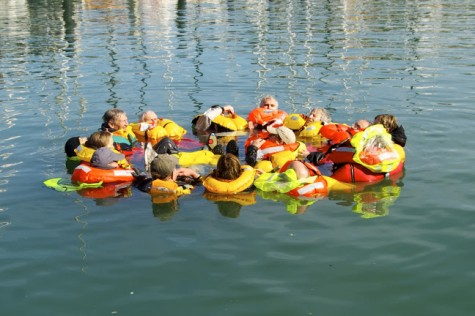 Group hug – warmer, more visible and less likely to get lost
Group hug – warmer, more visible and less likely to get lost
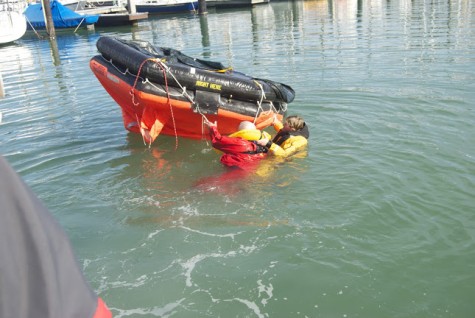
Turn that liferaft back upright.
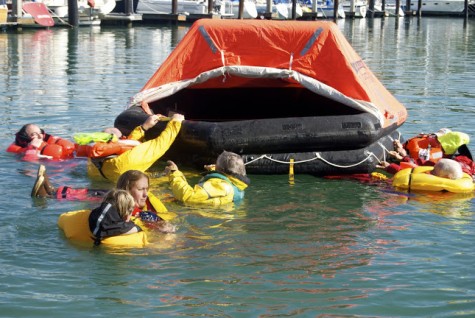 Biggest and strongest in first with people holding down the back of the raft. You need the biggest to help pull in the woman and children.
Biggest and strongest in first with people holding down the back of the raft. You need the biggest to help pull in the woman and children.
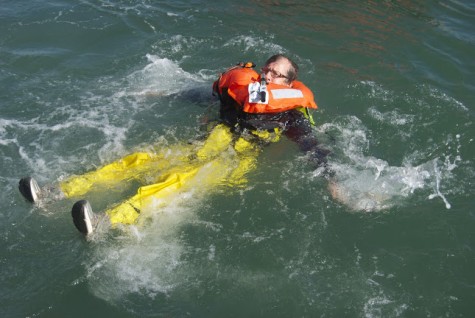 Keep those boots on. Water inside weighs the same as water outside they won’t drag you down… in fact his feet are floating.
Keep those boots on. Water inside weighs the same as water outside they won’t drag you down… in fact his feet are floating.
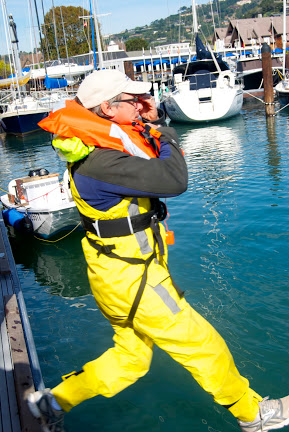 Safely entering the cold water of SF Bay.
Safely entering the cold water of SF Bay.
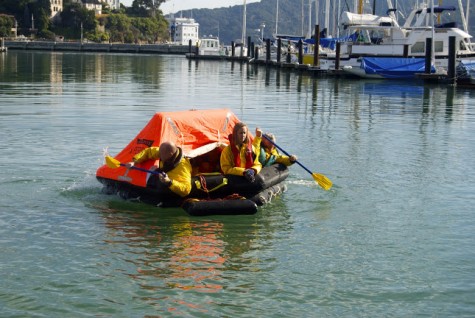
Row row row your liferaft! Getting used to the liferaft… Photo by Paige Brooks
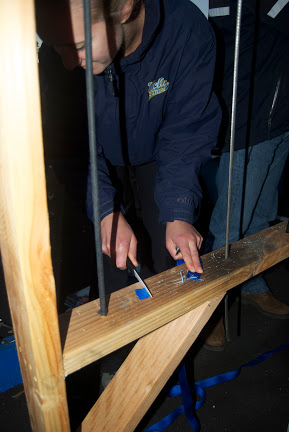
The wonder of ceramic knives from bed bath and beyond! Photo by Paige Brooks
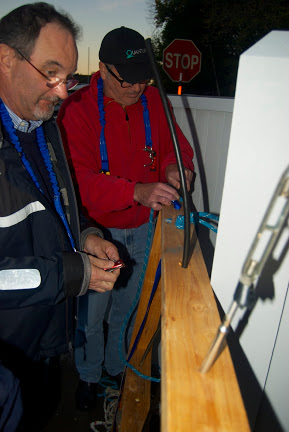
Does your emergency knive work? What type of tools do you carry for cutting your rigging? Where do you try to cut your rigging?
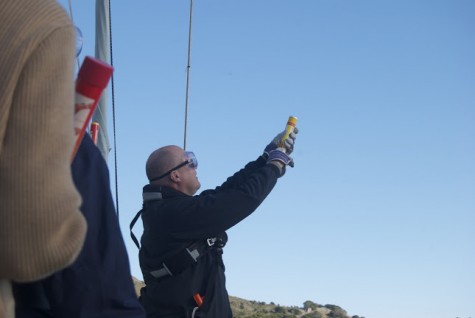
Photo by Paige Brooks
Setting off a rocket flare. Be careful of the recoil and wear gloves!
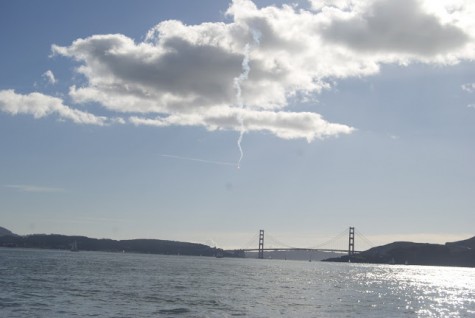
Photo by Paige Brooks
Thank you to George Brewster owner of Black Swan for lending us his boat last minute. If he hadn’t we wouldn’t have been able to do the rocket flares which was a valuable lesson for all involved.
Photo by Paige Brooks
So tell me who wants the SOLAS flare and who wants the non SOLAS flare!
New NorCal Minimum Safety Requirements Discussion
The Northern California Offshore Racing Council Safety Committee has posted a draft of the minimum equipment requirements for offshore races and is inviting comments.
http://www.latitude38.com/lectronic/lectronicday.lasso?date=2012-11-05#Story2 No
Home sweet home – altitude experience
This last trip to high altitude was moderately challenging physically and very slightly mentally. For the last 12 years my profession of racing yachts has taken me to much more physical and mental extremes than my altitude endeavors in 2012. The high altitude failures are frustrating, disappointing and puzzling for me all at once.
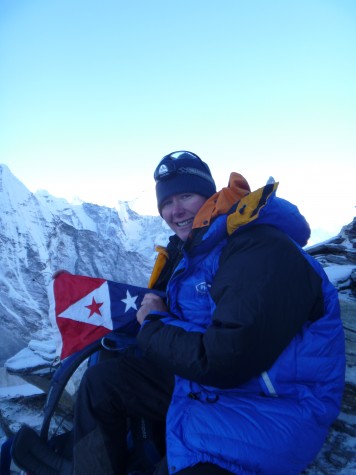
With SFYC burgee at 6000m smarter this time as I brought the fabric version. The plastic burgee fell apart in the cold at Aconcaqua at 6500m.
I was still making rational decisions at 6000m – gathering information on what remained of the climb and figuring out what percent of energy I felt I had left. I made a promise to myself that if I didn’t think I would have 50% of my energy left on the summit that I would not continue. At those altitudes the only person that will get you down the mountain is yourself. At lower altitudes you can have helicopter rescue (unlike the middle of the ocean). My heart wanted to continue up the hill but my lungs and my brain made the decision for me.
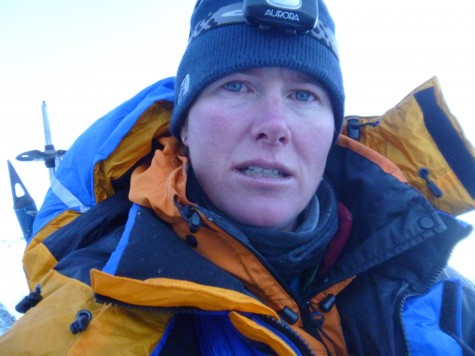
All that was left was to persuade Jon that I was capable of making it to crampon point to give the team each a good luck hug. I did try very hard to put on a smiley face after getting up from my hands and knees from a coughing and vomiting fit! The antibiotics didn’t stop my cold going to my chest and causing an infection.
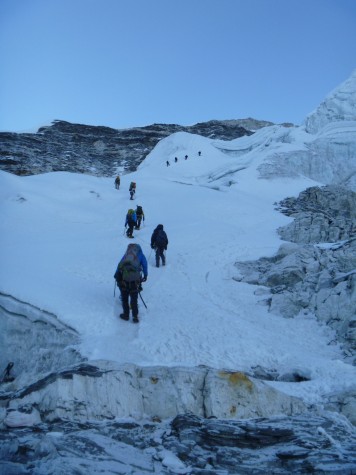
The guys heading on up without me.
I have always been able to prepare myself and my boats with lots of hard work and if not finish the races entered but end up on the podium. This new sport is something I haven’t found a successful equation for. Maybe there isn’t one – what I do know from reading is that your body reacts differently to altitude every time you go to a mountain. If the speed is down on the boat we logically figure out why and rectify the situation. To some degree this is possible with high altitude climbing but I think there is a large percent that can’t be controlled. The problem is we aren’t dealing with mechanical parts it is human physiology and if you get it wrong the potential for physical damage is higher. I monitor my pulse ox and that helps me with many other clues to understand what my body requires to go higher. I don’t get worried about those figures I just analyze why my figures are not as I expect them to be. My body does react quickly to help in the form of water, rest etc. at altitude but it does seem to lag behind others in acclimatization once I get to 5000m. We all acclimatize at a different rate which makes commercial mountaineering trips a difficult thing for my body to deal with.
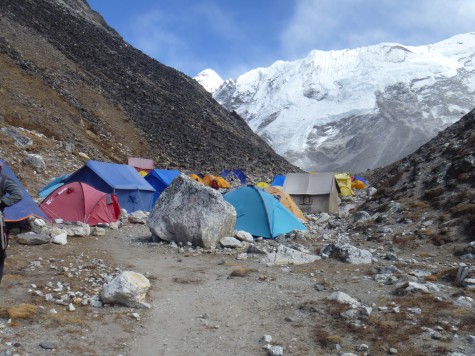
I think maybe a full days rest at base camp and then moving up to advanced base camp and starting from there would have made a difference to me however, commercial pressure would not allow that.
This last trip was physically a lot easier than Aconcaqua. We stayed at teahouses with heated communal areas en route except for two days in a tent. We ate sitting upright with knives and forks and didn’t have to carry our excrement in bags up and over the mountain. We didn’t carry our own gear as we had porters a huge difference which I didn’t get use to. This all meant it was more of a cruise in an Oyster 82 than a race in a Rogers 46. As a result I wasn’t ever in such a horrible state as I was on summit day back in January. So I guess I am very slowly learning from the experience despite not getting as high as in January it was an amazing trip with beautiful views and so much cultural history to learn.
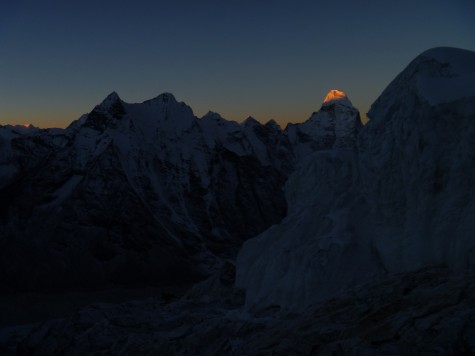 Ama lighting up as the sun comes up.
Ama lighting up as the sun comes up.
Will I go to high altitude again – yes. Why? Because I like to push myself, set myself goals, learn new things and besides the views from up there are stunning. It is time to take what I have learnt from three years south up to high altitudes and use it in a new environment.
Singapore 10 hours
Arrived airport 10pm and outside the gate was a set of computers so went online and booked a $16 bunk bed in a nearby hostel. Then jumped in a $9 shuttle to the hostel and I am now in my bunk about to go to sleep for 6.5 hours before heading back to Changi airport for the next leg of my journey home. Have a great Sunday.
Changi airport is a great experience would be nice if all airports were like this!


